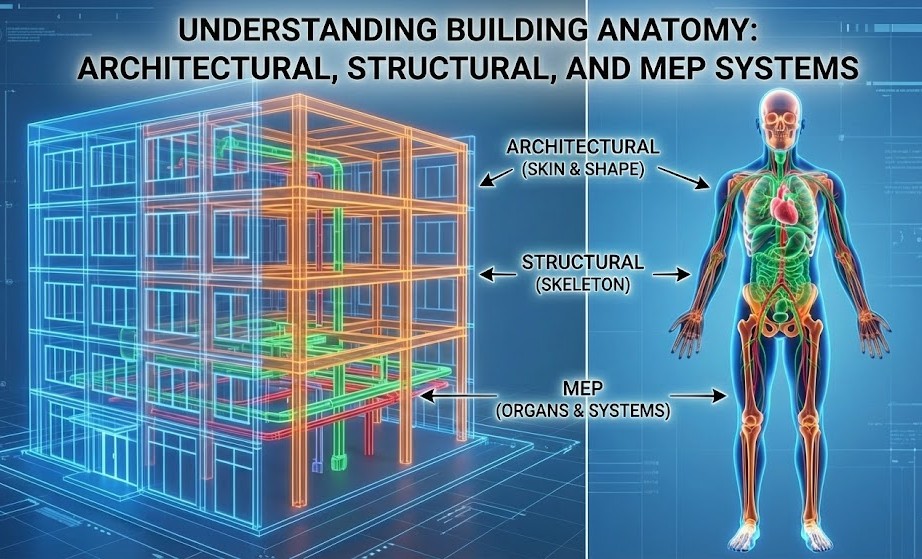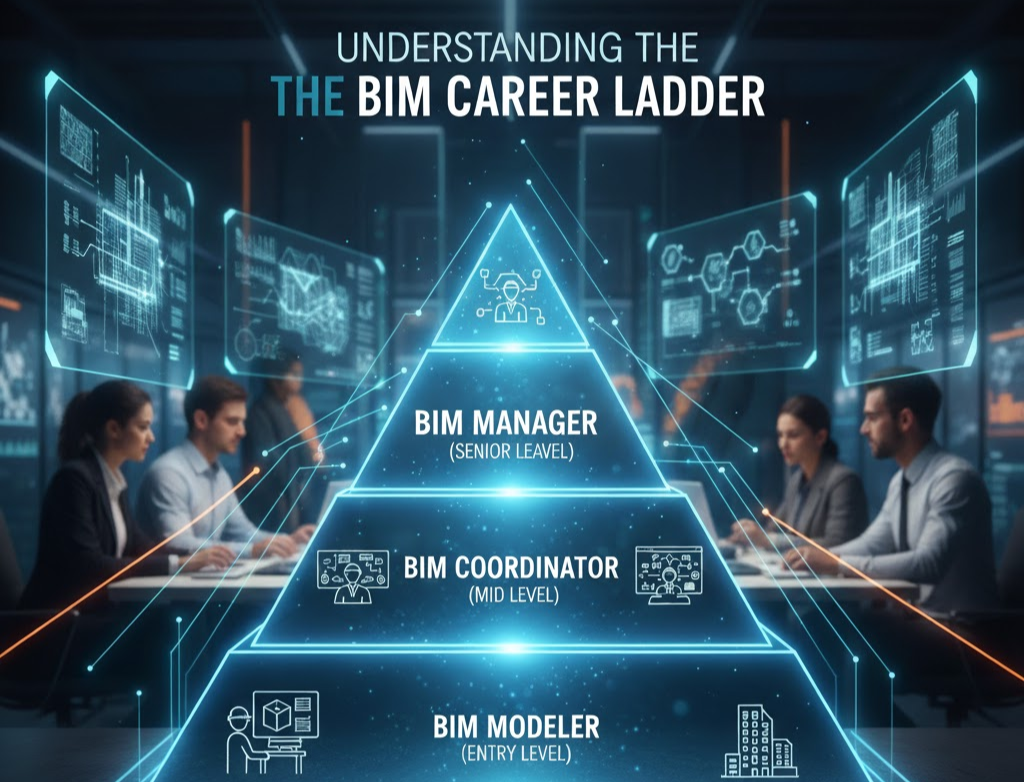
Author: Devika R
January 10, 2025
4 min read
Imagine capturing the intricate details of a historic cathedral or a sprawling industrial complex with pinpoint accuracy, then transforming that data into a dynamic 3D model that architects, engineers, and builders can use to plan, construct, and manage projects with unprecedented precision. This is not science fiction; it is the reality of Scan to BIM.
What is Scan to BIM?
Scan to BIM integrates laser scanning with BIM to create accurate 3D models, bridging the gap between physical buildings and digital representations. This technology captures precise data from structures, creating a point cloud foundation for BIM modeling, which enhances project accuracy. Professionals use this technology to improve design, construction, and facility management, especially in renovation and restoration projects.
Scan to BIM Workflow
- Step 1 – Capture : Laser scanning captures millions of data points to create a point cloud.

- Step 2 – Process : Clean and organize raw data, retaining only essential information.
- Step 3 – Model : Import processed data into BIM software to create a detailed 3D model.
- Step 4 – Coordinate : Align the BIM model with design intentions, ensuring accuracy and stakeholder collaboration.
- Step 5 – Document: Generate precise documentation, including as-built drawings and reports for construction and management.
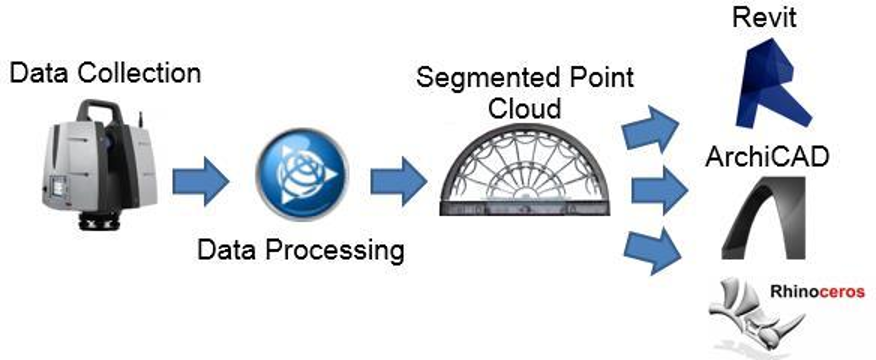
Why Scan to BIM Stands Out:
- Unmatched Accuracy and Detail : Scan to BIM captures existing conditions with unparalleled precision, including minute details like pipe diameters and electrical conduits. This leads to significantly reduced errors during construction, minimizing costly clashes and rework.
- Proactive Issue Detection : By comparing scanned data with the original design, Scan to BIM can identify discrepancies, such as hidden obstructions or structural deficiencies, allowing for proactive solutions and avoiding costly delays. This can significantly improve project timelines and budgets.
- Value Beyond Construction : Accurate BIM models provide valuable insights for facility management, enabling building owners to optimize maintenance schedules, track asset performance, and improve overall building operations.
- Competitive Advantage : Offering precise, reliable data sets through Scan to BIM differentiates your services in the market, attracting clients seeking high-quality, data-driven solutions.
Challenges of Scan to BIM:
- Handling Large Datasets :The scanning process generates massive datasets, requiring significant computational power and specialized software to process and analyze efficiently. This can increase project costs and complexity.
- Data Security : Protecting sensitive project information is critical. Robust data security protocols are essential to ensure the confidentiality and integrity of scanned data.
- Skill Requirements : The successful implementation of Scan to BIM requires a skilled team with expertise in both laser scanning and BIM modeling techniques.
- Potential for Human Error :While technology is highly accurate, human error can still occur during data acquisition, processing, and modeling. Robust quality control measures are essential to minimize these risks.
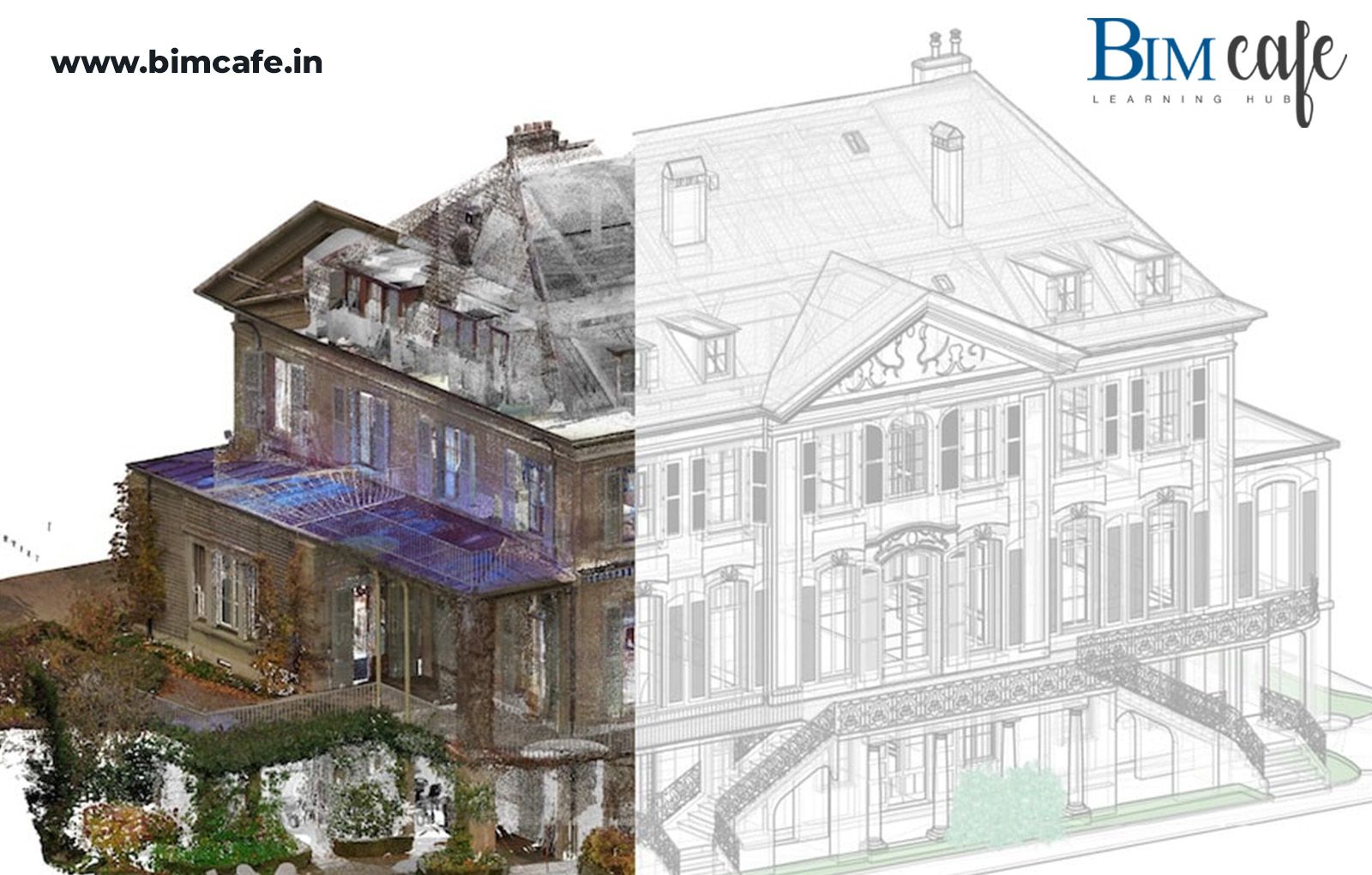
Scan to BIM in Action: Global Project Highlights
Scan to BIM is transforming projects across various sectors worldwide. Let’s explore some of the most impactful global projects that highlight the power and versatility of Scan to BIM.
- Historical Preservation : The Notre Dame Cathedral restoration after the devastating fire is a prime example. Laser scanning documented the damage and provided crucial data for the rebuilding efforts. Other historical sites and archaeological digs also benefit from precise digital records.
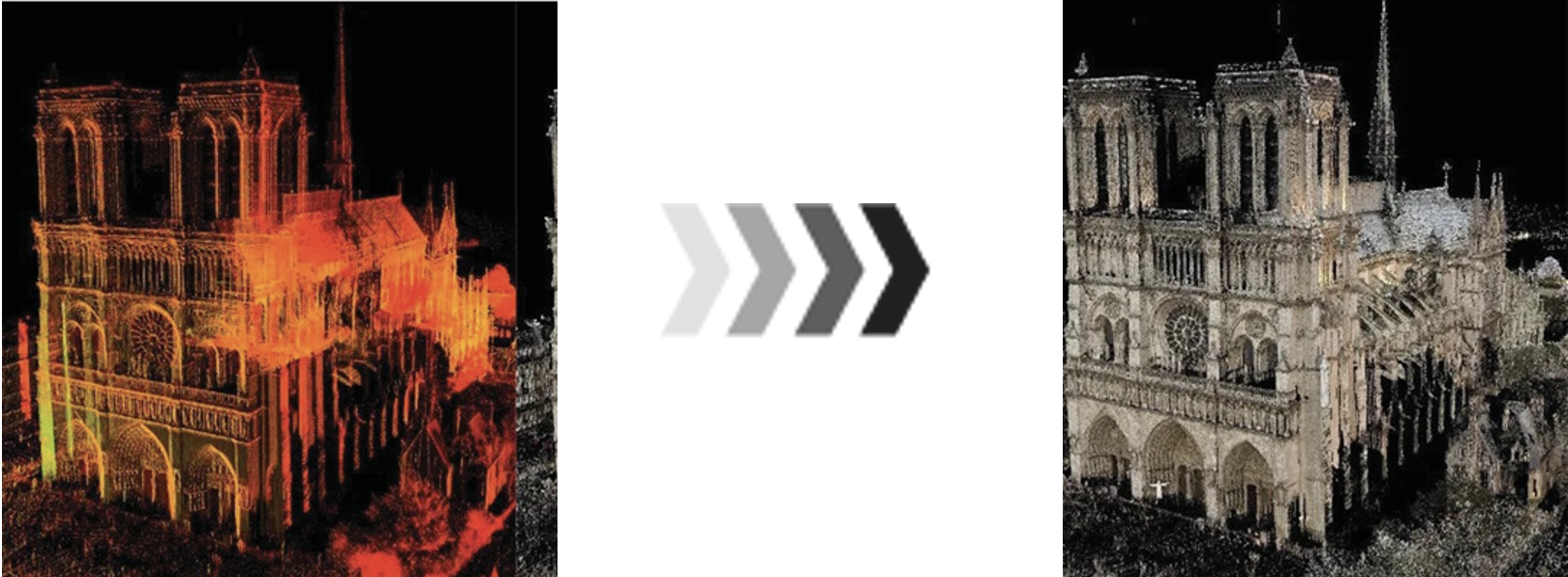
- Infrastructure :London’s Crossrail project utilized Scan to BIM to integrate new underground stations with existing infrastructure, minimizing disruptions and ensuring seamless connections. Other examples include bridge renovations, tunnel inspections, and highway expansions.
- Industrial : Power plants, refineries, and manufacturing facilities use Scan to BIM for retrofitting, maintenance, and expansion projects, enabling precise measurements and minimizing downtime.
- Commercial : Airport expansions, large building complexes, and retail developments leverage Scan to BIM for construction sequencing, clash detection, and facilities management, ensuring efficient project delivery.
Shaping the Future of Construction with Scan to BIM
The future of the construction industry is being shaped by innovations like laser scanning and BIM. These technologies continue to evolve and integrate into projects, improving accuracy and efficiency. One exciting development is the integration of artificial intelligence with BIM, where AI-powered tools can analyse data to offer predictive insights, enhancing project management and decision-making. Augmented reality also promises to transform how stakeholders visualise projects in real-time, improving understanding of design and construction plans.
As data processing technology advances, the transition from scanning to modeling becomes faster and more efficient, improving the quality and detail of BIM models. In this evolving landscape, Scan to BIM is essential for architects, engineers, and construction professionals, helping them stay ahead of the curve. By embracing these technological advancements, professionals can deliver projects that are not only innovative but also efficient and sustainable.
Want to Learn More About Scan to BIM and the AEC Industry?
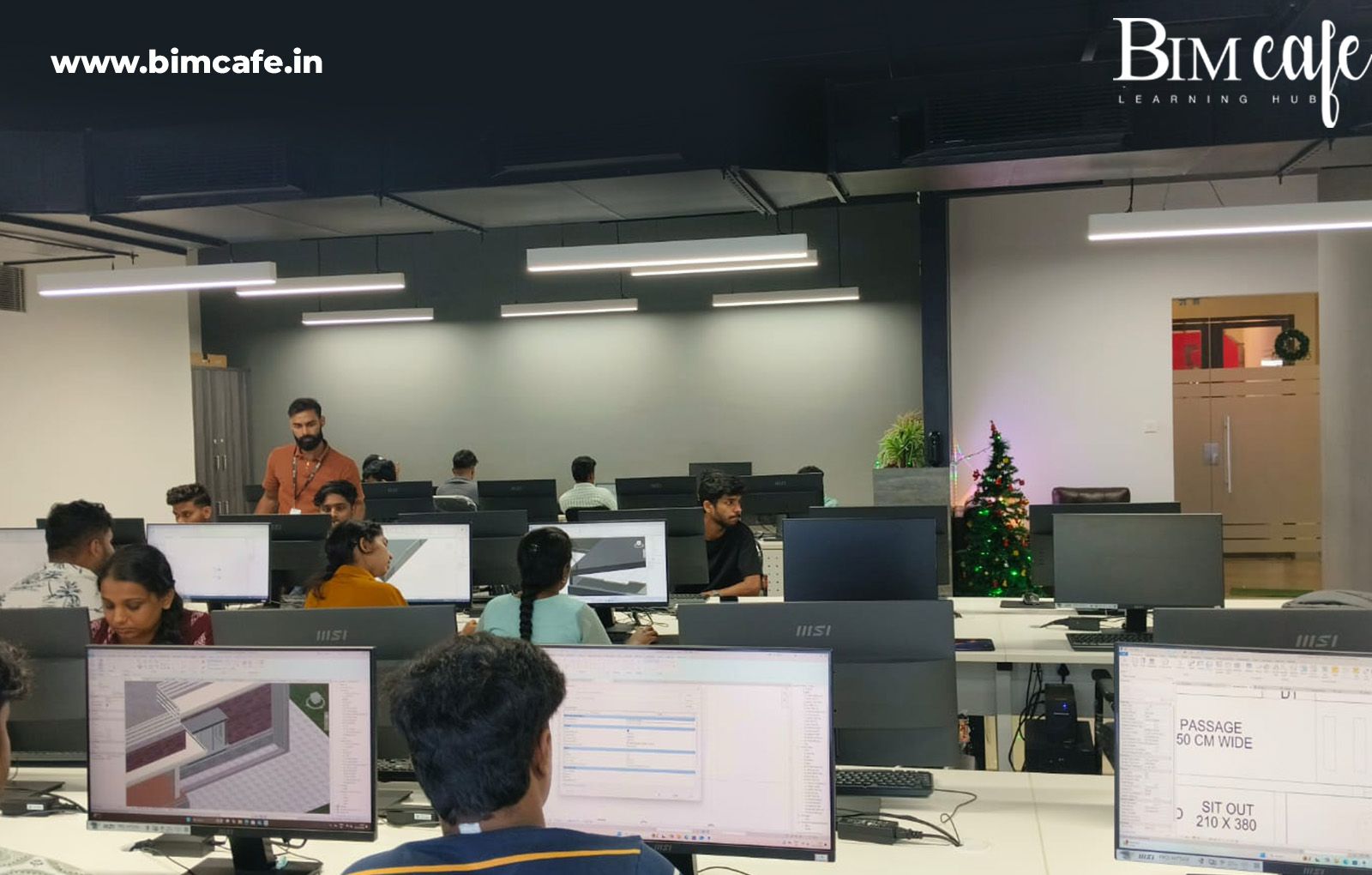
If you are fascinated by Scan to BIM and other cutting-edge AEC concepts, resources like the BIM Cafe Learning Hub offer invaluable opportunities. These hubs provide comprehensive training, workshops, and educational materials that cover a wide range of topics, from BIM software and workflows to industry best practices and emerging technologies. By engaging with these learning platforms, individuals can equip themselves with the knowledge and skills necessary to thrive in the rapidly evolving AEC landscape.

